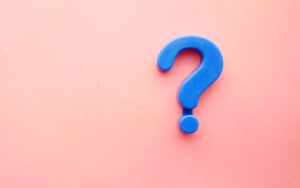By Micah B., 6th grade, Krieger Schechter Day School of Chizuk Amuno Congregation
Poll disparities are a significant issue in the upcoming United States presidential election. Many poll outcomes do not align and poll numbers for candidates like Elizabeth Warren, Kamala Harris and Joe Biden, conflict. Polling stations, including MSNBC, FiveThirtyEight, CNN and Real Clear Politics, present differing data, which leads to confusion among voters. So why are there such disparities between the polls?
To make polls accurate, survey groups need to sample hundreds of people to imitate the data of millions. For example, if 50 percent of voters are female, then 50 percent of those included in the sample groups should also be female. In general, polls use the probability theory to make mathematical sense out of random data collected from large groups.
According to ABC News, the most popular way to poll is using Random Digit Dialing (RDD), which involves making a call to a random phone number. Pollsters ask questions to collect information about what potential voters think.
According to the How Stuff Works website, polling in the late 19th century and early 20th century consisted of straw polls where a newsperson boarded a train and posed the same question to all passengers, tallied the results, and then published it as a representation of what the people were thinking. In the 1930s, a newspaper known as Literary Digest polled by phone to gather larger samples, but those polls failed because most of those interviewed were wealthy Republicans.
Polling is one of the tools political parties use to predict the outcome of an election. When a diverse group of people is selected and polling methods are consistent, a poll can provide an accurate representation of what voters think. However, most of the time, polls are inaccurate and unreliable.
For the upcoming election, the poll numbers conflict, and there could be many reasons. According to Zackary Berger, associate professor of internal medicine, a faculty member of the Berman Institute of Bioethics at the Johns Hopkins University and a Krieger Schechter Day School parent, “There’s a lot of things that cause variation in poll results, including the population that’s polled: whether you poll in person, or on a landline, or cellphone, [or] whether you’re talking about registered voters, or likely voters or total voters.”
Because polls are an integral part of the election process, it is important to find ways to ensure consistency. According to Dr. Berger, “You have to have standardization in methods.” The poll inconsistencies are likely caused by different methods of gathering data. Dr. Berger suggests to get this standardization in polls that we use “either self-imposed standards from the polling professionals or journalism, or regulation.”
A big disparity in the polls is Joe Biden’s placement. In the New York Post, for example, it shows that Warren is leading Biden with 27 percent of the vote, while Biden has 25 percent. This data comes from a Quinnipiac University poll. Many other polling stations disagree, however. A website known as Politico estimates differently. A recent poll tallied 33 percent of the vote for Joe Biden and only 16 percent for Elizabeth Warren.
According to Jacob T., a seventh-grade KSDS student, “Last time I checked polls, which was a few days ago, it placed Elizabeth Warren in first place and Joe Biden behind her.” However, Jacob also questions this and says, “I think it could be Elizabeth Warren or Joe Biden [in the top spot].”
ABC News’s polling research group, Langer Research Associates, also encourages the government to set standards on polls. According to the Langer Research Associates, large polling groups should be continuously researched and scrutinized to make sure that they fit the standards. The firm uses this tactic to ensure that all the polls conducted by ABC News are standardized to eliminate poll disagreement.
No matter the size of the sample, polls will never fully represent 300 million Americans and the polling process will never be an exact science. Chance accounts for a large portion of the margin of error. Poll stations may try to secure the most accurate results but just happen to get a large number of participants selecting the same answer. According to the theory of probability, the best method for combating this, is sampling a larger portion size.
Polls are a tool we use to predict election outcomes. There is massive disagreement between poll stations, as there is no doubt that polls can conflict.





